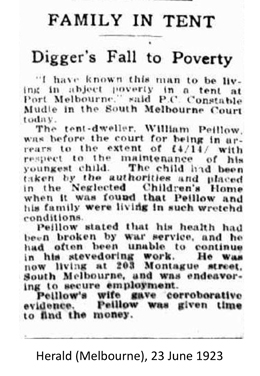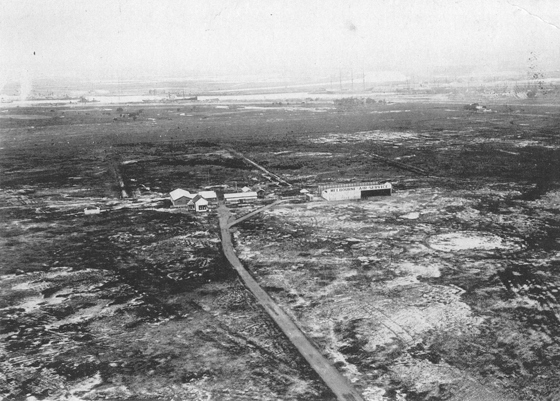
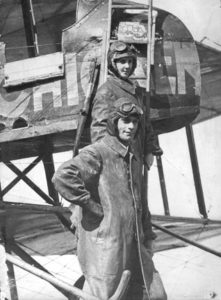
Aviation was the great new development in the 1920s. Flying was no longer a novelty, but a mainstream part of the transport industry. The flat, sandy stretches of Fisherman’s Bend offered a good location for landing strips close to the business centre of Melbourne. The first one was licensed to Maurice Falman in 1921 and operated by him until 1937.
The second airfield was operated by Graham Carey (right). He specialised in delivering printed pamphlets to country districts but also offered joy flights. He retired in 1937.
Entertainment entered a new phase in Port Melbourne with the opening of purpose built picture theatres. Silent movies had been shown in the Ozone picture theatre that was the recently built Town Hall auditorium. Shortly after, Hoyts Cinemas opened the Eclipse Picture Theatre on the corner of Pickles and Crockford Streets.
It seated 1,100 people yet on a Saturday night you needed to book a seat if you wanted to be sure of getting in.
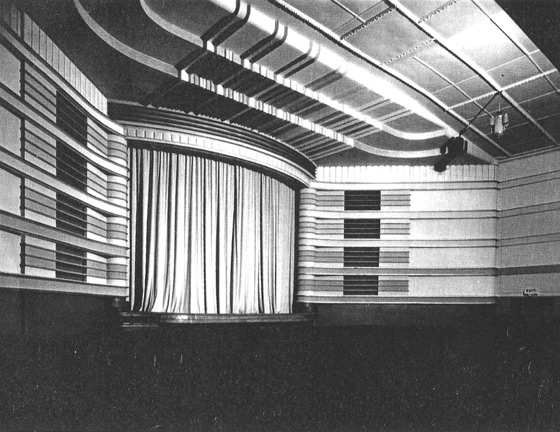
Port Melbourne Theatre on the corner of Bay and Liardet Streets was used as shops and business premises after it ceased to be a picture house until a fire in 2017 severely damaged the old building.
During World War I there were high expectations of a post-war world that was to be better place. The grim reality of Port Melbourne life in the 1920s showed their optimism had been misplaced. Many of the men who survived war service returned damaged and forever changed by the horrors they had lived through.
Although outwardly a prosperous time, especially compared to the decade that followed, unemployment was high. Advances in the mechanisation of ship handling made dock work a little safer but reduced the number of men required, with a heavy impact on families in Port. In 1919 a Relief Committee was set up here to feed the hungry.
In 1928 waterside workers went on strike over their conditions. Ship owners backed by the Federal Government, recruited non-union labour, it was estimated that 1,100 non-union men were at work in Port Melbourne and tensions were high.
On 2nd November 1928 a group of union members assembled at Princes Pier intending to challenge the non-unionists but were persuaded by moderate union leaders to leave the pier. As they did so the police fired on them wounding several men. One of them, Allan Whittaker, later died from his wound. This incident embittered waterside workers for decades after. From then until the beginning of World War II many men never found work.
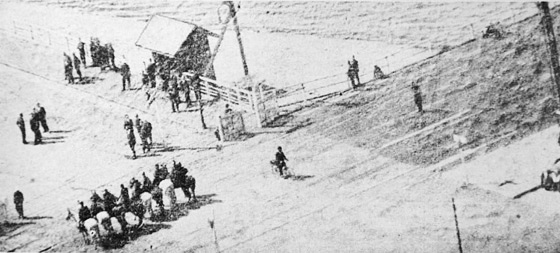
The photograph below shows the construction of the Spencer Street bridge. Taken from the Clarendon Street side of the river, the railway line between Flinders Street Station and Spencer Street Station can be seen arching across the top of the picture.
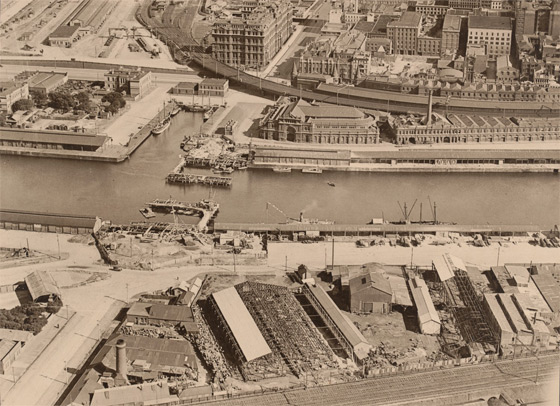
The building of this bridge at the end of the decade impacted on Port Melbourne, giving businesses quick access between the piers and the city and therefore preparing for the industrial development of Fisherman’s Bend over the next 20 years.

